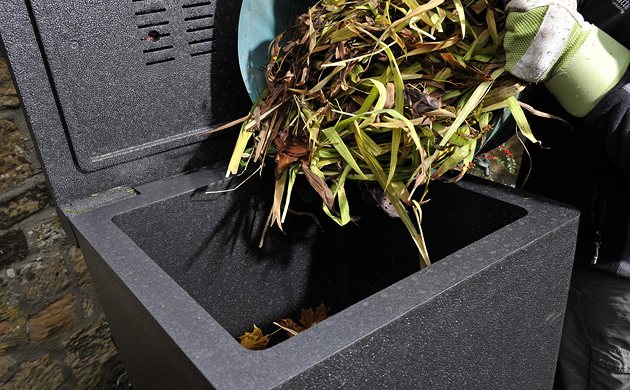How To Compost All Food Waste – And Save The World!
It is easy to home compost vegetable peelings, tea bags, coffee grinds – but they typically only account for 35% of domestic food waste. The other 65%* (meat, fish, cooked food leftovers, mouldy bread, plate scrapping, chicken bones, cakes, bits pizza, chips, etc) falls into the “do not” add to your compost bin list. (*calculated from the 2011 Recycle Now, WRAP waste analysis figures)
It is not easy to compost all food waste. As food breaks down, the cell structure weakens and water is released. The food collapses into a thick slimy mush. This mush prevents airflow and the waste quickly turns anaerobic. As soon as anaerobic bacteria take over, putrid gut wrenching odour is released. From here it is all downhill – the smell attracts vermin and flies and everything becomes unpleasant.
Millions of home composters want to compost all food waste. Not only will this divert it from landfill, it will produce loads more quality compost to grow more healthy plants and vegetables.
Top tips for successfully composting ALL food waste
Keep it hot – insulate you waste – bacteria release heat as a by-product when they ‘eat’ the waste. Heat transfers from a hot to a cold until equilibrium (same temperature) reached. Even in summer when the air temperature might hit 25C, a compost heap will not stay hot (40-60C) for long as the heat rapidly moves to the cooler air. If you want to keep your waste hot, you need to reduce the rate of heat loss i.e. you need to insulate it. There are two ways of doing this: a very large heap (at least 1XX1m) where the outer metre of waste acts as insulation around a small hot core, or by using a bin made from a highly insulating material.
Shred – it is often said that one million bacteria can fit on a pin head. Give them a break! A whole potato wrapped in sheet of newspaper (a woody hard to digest lignin material) is a gargantuan challenge. Chop things up – let them get into the soft easy stuff inside
Remove (or manage) excess water – you need lots of heat to drive off excess water as steam – i.e. you need to be ‘HOT composting’. You will almost certainly need to add dry shredded office paper or corrugated cardboard (not newspaper!) to balance ‘wet’ food waste.
Aerate – you need to keep pulling lots of oxygen/air into the waste – Unless you have the means to force airflow (e.g. a pump / blower), or you can constantly turn/tumble (I mean constantly), then you are reliant on “buoyant airflow’ – the chimney principle of hot air rising creating a pressure drop that pulls cold air through from below. You only get buoyant airflow if there is a temperature gradient and a structure through which the air can move.
Add a ‘Bulking Agent’ to maintain buoyant airflow— to get a structure that stops food waste collapsing into a mush you need to add what we refer to as a bulking agent (typically this is wood chip).

[…] the HOTBIN is insulated and controls airflow so it can compost fast which means you can add ALL food waste. And by this we mean; left over meals, plate scrapings, meat, fish, small bones and things like […]